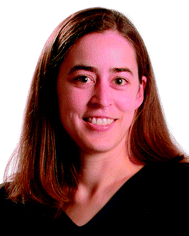Medicinal inorganic chemistry: a web themed issue
Amy M. Barriosa, Seth M. Cohenb and Mi Hee Limc
aDepartment of Medicinal Chemistry, University of Utah, Salt Lake City, UT 84112, USA. E-mail: Amy.Barrios@utah.edu
bDepartment of Chemistry and Biochemistry, University of California, San Diego, La Jolla, CA 92093, USA. E-mail: scohen@ucsd.edu
cDepartment of Chemistry and Life Sciences Institute, University of Michigan, Ann Arbor, MI 48109, USA. E-mail: mhlim@umich.edu
 Amy M. Barrios | Amy M. Barrios is an Associate Professor in the Department of Medicinal Chemistry at the University of Utah College of Pharmacy. Her current research focuses on the investigation of bioactive gold compounds and the development of chemical probes targeting protein tyrosine phosphatases. |
 Seth M. Cohen | Seth M. Cohen is a Professor and Chair of the Department of Chemistry and Biochemistry at the University of California, San Diego. His current research focuses on the development of metalloprotein inhibitors and the functionalization of metal–organic frameworks. |
 Mi Hee Lim | Mi Hee Lim is an Assistant Professor of Chemistry and a Research Assistant Professor in the Life Sciences Institute at the University of Michigan. Her current research focuses on elucidating the roles of metal ions, proteins, and reactive oxygen species in human neurodegenerative diseases. |
Metal ions: friend or foe?
The toxicity of metal ions has been well publicized and many are familiar with the hazards associated with environmental exposure to mercury, lead, and chromium. On the other hand, metal ions including iron, copper, and zinc are absolutely required to support life as we know it. By exploiting the unique properties of metal complexes, chemists have been able to take metal ions with significant toxicity, such as arsenic, platinum, and technetium, and turn them into therapeutic and diagnostic agents that have saved countless lives. The field of medicinal inorganic chemistry encompasses a wide range of topics, including: (1) the development of metal-based reagents as therapeutic and diagnostic agents for human disease; (2) the investigation of the role of metal ions, metalloproteins, and metal ion homeostasis in health and disease; (3) the identification of the role of metal ions in pathogenic protein misfolding; (4) the design of metal chelators for use in treating metal ion overload, exposure to toxic metal ions, or inhibition of metalloproteins; and (5) the elucidation of the general functions of both endogenous and exogenous metal ions in living systems at the molecular level. We are pleased to present this collection of articles, reflecting the multifaceted and multidisciplinary nature of the field, in this themed online issue of Chemical Communications.The articles in this web collection provide a glimpse into the scope of the field. The feature article by Nicolas Barry and Peter Sadler entitled “Exploration of the medical periodic table: towards new targets” (DOI: 10.1039/c3cc41143e) provides an excellent overview of the field, while the feature articles by Caterina Ramogida and Chris Orvig (“Tumour targeting with radiometals for diagnosis and therapy”, DOI: 10.1039/c3cc41554f) and Alexis Komor and Jacqueline Barton (“The path for metal complexes to a DNA target”, DOI: 10.1039/c3cc00177f) provide in-depth analyses of their respective subjects. Metal ions from titanium to gold are discussed in the communications, covering topics as diverse as the biological roles of the first row transition metals iron, copper, and zinc to the therapeutic uses of platinum and silver. Other reports describe the use of radionuclides for imaging and redox-sensitive ligands in chelation therapy. The importance of metal binding in amyloid proteins is illustrated, as are the challenges and rewards of understanding biologically relevant metal and ligand redox chemistry. Overall, this collection of articles, while not a comprehensive overview of the field, represents some of the best work going on today. We thank all of the authors who have contributed to this themed issue and hope that the readers of the issue will be as inspired by the work as we have been.
| This journal is © The Royal Society of Chemistry 2013 |
